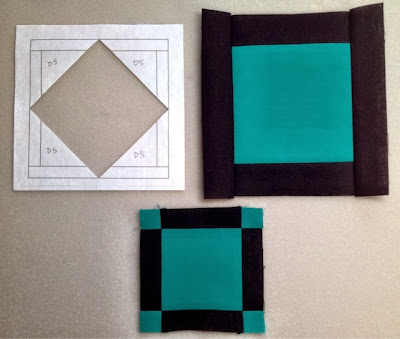I will refer Gentle Reader to the Shenandoah Valley Botanical Album Quilt of 1858 blog and the Virginia Quilt Museum web site for details about this lovely quilt pattern and its role in raising money for the museum in celebration of its 20th anniversary.
My quilt plan is to the right of the original. Changes:1. The tree and the rainbow blocks come out for pillow designs.
2. I split the design of some blocks, duplicated and made into two different blocks.
3. Only one pineapple block.
4. 5 blocks for 5 colors: red, pink, purple, orange, yellow




































